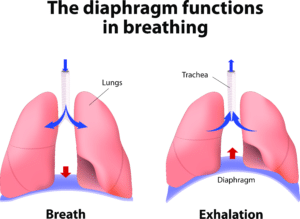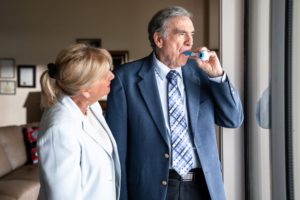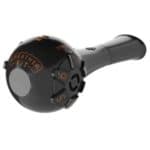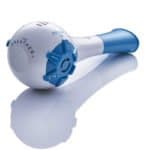What is Expiratory Muscle Training?
What is Expiratory Muscle Training?
During sleep or rest, breathing in and out seems natural because the body’s nervous system passively controls this process. However, conscious control of respiration needs training for efficient release of carbon dioxide (CO2) from the body and intake of enough oxygen (O2) on the next breathing cycle.
Better oxygenation of the body is necessary during physical exercise, disease conditions, and maximum performances.
Expiratory Muscle Training (EMT) is part of Respiratory Muscle Training (RMT) that focuses on strengthening muscles for exhalation.
With stronger expiratory muscles, breathing becomes more efficient for O2-CO2 gas exchange and normal body processes like speaking, coughing, and swallowing. EMT trains the upper airway muscles necessary for speech, airway clearance, and expectoration. At the same time, EMT works with the trunk muscles for the body’s flexibility and rotation.
Mechanism of EMT

Like Inspiratory Muscle Training (IMT), EMT works by activating its target respiratory muscles for better power, strength, and endurance. Resistive devices like The Breather have adjustable knobs with specific EMT resistance for training and strengthening the hyolaryngeal complex, including the larynx or voice box.
Through RMT, increased air capacity and pressure allow enough airflow to get through the vocal cords and produce vibrations for speaking. These stronger respiratory muscles also support active breath-cough-swallow reflex to prevent foreign objects from passing through the airway.
Benefits of EMT

People with neuromuscular diseases like Parkinson’s disease (PD) have difficulty in speaking (dysphonia), swallowing (dysphagia), and coughing. Studies show that EMT helps PD patients for audible voice production, effective breathe-swallow and cough pattern, and prevents aspiration pneumonia (AP) for better health, clear communication, and improved quality of life (QoL).
In support of physical therapy, EMT benefits paralytic or stroke patients by strengthening their face, throat, neck, lips, and shoulder muscles during training.
For asthma and allergy cases, EMT improves airway clearance by removing mucus build-up through productive coughing.
Additionally, musicians and public speakers can reach their full potential during competition and stage performances with the help of EMT.
Recommendation


